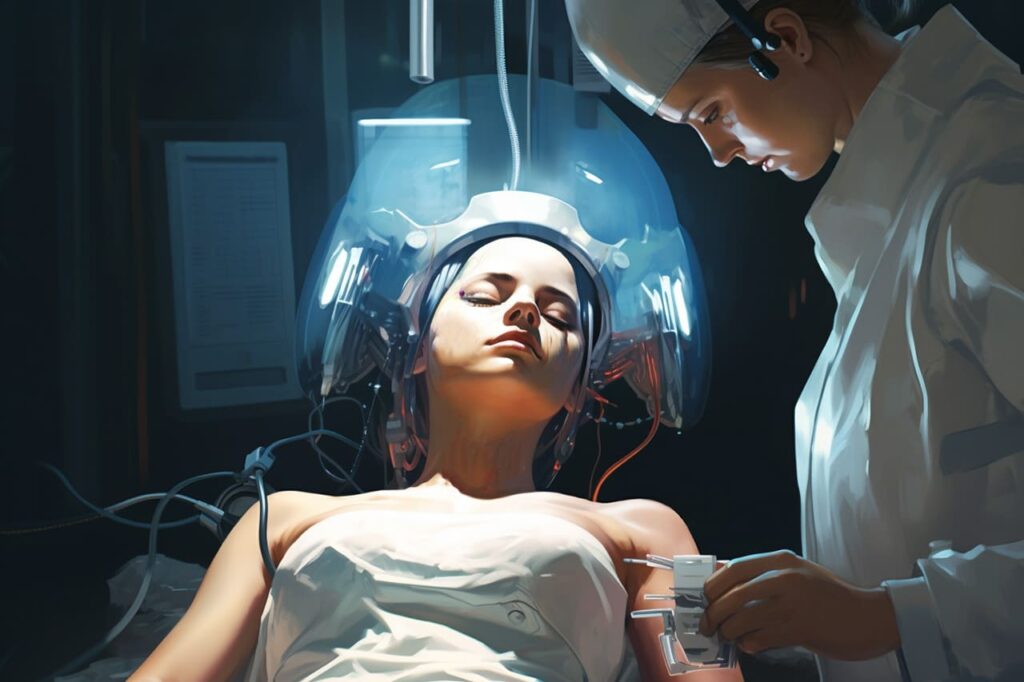For centuries, surgery has been an art as much as a science—steady hands, years of experience, and nerves of steel were the only tools that mattered. But today, a new player has stepped into the operating room: Artificial Intelligence (AI).
From AI-driven robotics to machine learning algorithms that assist with diagnosis, the future of surgery is looking sharper, faster, and more precise than ever. AI is already helping surgeons perform complex procedures, reduce medical errors, and push the boundaries of what’s possible in medicine.
But with great innovation comes big questions: Can we trust AI in the OR? What happens if a machine makes a mistake? And will AI eventually replace human surgeons?
Let’s dive into the exciting, sometimes unsettling, and undeniably game-changing role of AI in surgery.
The Rise of AI in Surgery: Precision, Speed, and a Steady Robotic Hand
For those picturing a sci-fi movie where a robot performs surgery with zero human intervention—we’re not there yet. But AI-powered surgical tools are already revolutionizing procedures, making them safer, faster, and more precise.
🤖 AI in Action: How It’s Used in Surgery Today
| AI-Powered Technology | How It’s Changing Surgery |
|---|---|
| Robotic-Assisted Surgery | Robotic arms perform delicate movements with sub-millimeter accuracy, reducing human error. |
| AI Image Analysis | AI scans medical images (like MRIs and CT scans) faster than the human eye, spotting issues early. |
| Machine Learning for Decision-Making | AI analyzes patient data to assist surgeons in making real-time decisions during procedures. |
| Augmented Reality (AR) for Surgery | AI-powered AR overlays real-time digital guides onto a patient’s body to help surgeons navigate. |
These tools don’t replace surgeons. They enhance them. AI is the ultimate surgical assistant, reducing fatigue, improving accuracy, and handling repetitive tasks so surgeons can focus on the big picture.
The AI Surgical Assistant: Friend or Foe?
✅ Where AI Excels in Surgery
🔹 Unmatched Precision – Robotic-assisted surgery allows for movements that are steadier than a human hand, reducing accidental tissue damage.
🔹 Faster Diagnoses – AI-driven image analysis can spot tumors, fractures, or internal bleeding in seconds—far faster than even the most experienced radiologist.
🔹 Fewer Complications – AI helps optimize surgical plans based on a patient’s medical history, reducing the risk of complications.
🔹 More Accessibility – AI-powered robots could make complex surgeries available to more people, even in remote areas where specialist surgeons are scarce.
⚠️ But AI in Surgery Comes with Challenges
❌ Can AI Make Mistakes? – AI isn’t perfect. Misdiagnoses, incorrect predictions, and system failures could have life-threatening consequences if not carefully monitored.
❌ The Cost Barrier – AI-powered surgical systems aren’t cheap—which could make high-tech surgeries inaccessible to many hospitals and patients.
❌ Regulatory Confusion – Laws and guidelines for AI in medicine aren’t clear-cut yet. Who’s responsible if a surgical AI makes an error—the doctor, the hospital, or the tech company?
AI is powerful, but it’s only as good as the data it’s trained on. And that brings us to an even bigger challenge: trust.
Would You Trust a Robot to Perform Your Surgery?
This is the million-dollar question. AI is already performing some surgeries with minimal human intervention, but most patients still want a real surgeon in the room.
AI-Only Surgery: A Future Possibility?
Imagine a fully autonomous surgical robot performing an operation while the doctor watches from a control room—or even a different country. It might sound futuristic, but experiments with AI-powered surgery are already happening.
Would you be comfortable with a robot surgeon?
- Yes! AI is precise, doesn’t get tired, and eliminates human error.
- Maybe… As long as a human surgeon is supervising.
- No way! What if something goes wrong? I want a human making the big decisions.
For now, most AI-assisted surgeries still require a human touch—but as technology improves, we may see a shift toward AI taking a larger role in the operating room.
The Future of AI in Surgery: What’s Next?
AI isn’t just here to stay—it’s evolving fast.
🔮 Next-Gen Surgical Robots – Future AI-powered robots could perform procedures entirely on their own, with human doctors only stepping in if needed.
🔮 AI-Powered Preventative Care – AI might eventually help prevent surgeries altogether by detecting health issues before they become major problems.
🔮 Global AI Surgery Centers – AI-assisted procedures could make world-class surgery accessible worldwide, no matter where a patient lives.
One thing is clear: AI isn’t replacing surgeons—it’s making them even better.
Final Thoughts: Should AI Have a License to Operate?
Artificial intelligence is transforming surgery, making procedures safer, faster, and more precise than ever before. But with great power comes great responsibility—and a lot of questions:
🔹 Who should regulate AI-powered surgeries?
🔹 Can AI ever fully replace human decision-making in medicine?
🔹 How do we make AI-driven surgery affordable and accessible?
The AI revolution in healthcare is only beginning. Whether that excites you or terrifies you, one thing’s for sure: The operating room will never be the same.
What do you think? Would you let AI assist in your surgery—or even perform it entirely? Let’s discuss!
